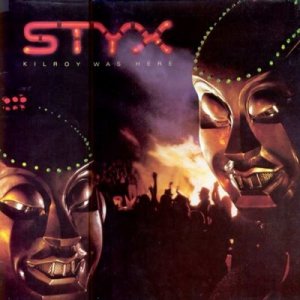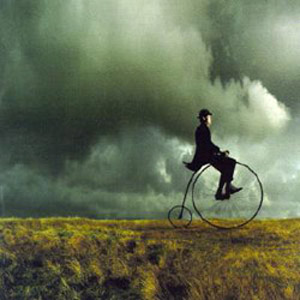Emulation and the Academy
Here’s the deal: games played on PC and/or Mac, including emulated games from previous generations, present enormous challenges for educational institutions (and the libraries that love them). These challenges are instructive regarding the disconnect between the rapid growth, evolution, and demise of various forms of cultural production, and the laws that ostensibly govern production, reproduction, and retention.
The First Sale Doctrine is the cornerstone of library collections (and record collections, and all sorts of other collections). When you buy an object that is subject to copyright law, you acquire certain rights while the rights-holder retains others: you can sell it, lend it, destroy it, etc. You can’t copy it (some severely limited exceptions); those rights remain with the person or entity that owns the copyright. For physical collections, this isn’t a problem: we buy a book, then lend it. If we want to lend ten copies, we buy ten copies. You buy a record, decide you don’t like it, and give it to a friend (or an enemy, if you accidentally bought some Styx, such as the following:).
None of this invokes copyright.
Digital collections muddy the waters. What, exactly, is a copy for purposes of copyright? Is it a single e-book purchase being open simultaneously on multiple computers? Is it a single copy being opened on a wireless device from its home on a network drive? Is it a data file moving from HDD to RAM upon opening? It’s mind-bending that these are real questions with real financial implications.
Further, we have moved to an uncertain position regarding our valuation of the concept of a purchase. What purpose does a purchase serve? When we make a purchase, what do we expect to receive? Increasingly we are moving away from purchasing products, and toward purchasing licenses to use those products. Functionally, our needs are (mostly) being met: we give some money, and we get to use a thing. The steps in between are elided. Culturally, we don’t really care. We don’t see the functional difference between owning a thing and getting to use it vs. just getting to use it.
This is insidious: it is the difference between buying an object (with some extra rights for free!), and buying some rights. If all you’ve bought is some rights, the First Sale Doctrine no longer applies because you never actually owned the object-under-copyright in question. Those rights might come with all sorts of awesome limitations and requirements. And finally, if you’ve purchased some rights to use a digital object, you’ve got to worry about the DMCA, which famously erodes the rights of the purchaser by (among many, many other things) making otherwise-legal unlicensed copying a federal crime if the creation of that otherwise-legal copy required circumvention of (standardless) copy-prevention technology.
To see all these issues in one myopic mash-up, check out the WoW Glider case (here’s some more terrible music for while you read; remember, this is the sound of progress!).
Still, even with the DMCA a library can buy and lend digital media. DVDs and console games are great examples. Buy, lend, learn, and the law is (generally) on your side. (Note that I’m leaving aside discussion of digital journals, e-books, etc. that are highly relevant to libraries and academics in general, but beyond the scope of my focus here.) But traditional legal, library and academic models fall far short of providing workable solutions for scholars and students who wish to study games produced for personal computing platforms. Even more, legal, library and academic models are woefully ill-equipped to facilitate the study of games that were originally produced for an outdated closed system (such as an old console, an obsolete OS, or an arcade cabinet), but are now most reasonably archived in ROM format coupled with appropriate emulators. Further, establishing the provenance of a commercial reproduction of a classic game is functionally impossible: if I ask my students to study the behavior of the ghosts in Pac-Man, can I expect that any reproduction (Flash, HTML 5, XBLA, etc.) of Pac-Man they might play will retain the programmatic behavior of the original? Which version of a game am I even studying? How can I tell?
This is where non-traditional distributed community archives far outreach the potential of library collections and academic bureaucracies. It is (ridiculous as it may sound) hugely significant to be able to choose between a ROM of a BurgerTime PCB and a NES BurgerTime ROM. But ROMs are an unsettled legal minefield, and not one that libraries are equipped to deal with: negotiating an agreement to use/lend/whatever a ROM is analogous to a license agreement. Libraries and academic institutions are much more comfortable just buying objects, and getting the lending rights for free. But what about BurgerTime? If I want my students to legally study the aesthetic differences between the NES port and the original arcade cabinet, I (or my institution) need to provide both. The cost of the NES port is negligible (leaving aside the political cost of convincing colleagues that purchasing games is not a waste of funds), but the arcade cabinet might run $1,000 – $2,000 at purchase (leaving aside the cost of storing and servicing it over time). That’s not a proposal I can write; the cost-benefit doesn’t work out. Yet there IS value in studying the arcade (or DOS, or Intellivision, or whatever) experience.
Part of the problem is that video games firmly resist Fair Use guidelines. The notoriously vague four-factor test (which we recently saw painfully and expensively misunderstood in the Kind of Bloop album cover case) is a wonderful safe haven for academics and instructors who want to copy a chunk of something for use in non-commercial research or instruction. If such copying meets fair use guidelines, no permission need be sought (nor fees paid!). Here are the guidelines:
- the purpose and character of the use, including whether such use is of a commercial nature or is for nonprofit educational purposes;
- the nature of the copyrighted work;
- the amount and substantiality of the portion used in relation to the copyrighted work as a whole; and
- the effect of the use upon the potential market for or value of the copyrighted work.
We win the first factor, because our use of the work is for nonprofit educational purposes. But we quickly lose the second factor (the work is creative, as opposed to factual and/or scholarly, in nature); and we spectacularly fail the third factor because it is functionally impossible to copy a small portion of a video game.
If I could reasonably copy (create a ROM of) only the Forbidden Woods section of The Wind Waker and assign my students to play it, that would be great! But that isn’t feasible; I (or they) would have to copy (or purchase) the entire game in order to play that one section. The phrase “portion used” sometimes pushes people to understand that the amount they copy is immaterial with regard to the third factor; that the amount copied and the “portion used” are two separate things. This is not the accepted interpretation. For legal purposes, “portion used” is synonymous with “amount copied”. This is relevant because in the above example I might copy the entirety of The Wind Waker but only require my students to use a small portion of it. In this case, this limited concept of “use” is irrelevant. The third factor is impacted by how much of a work is copied, and not by how much of that copy is useful. The implied assumption is that you will only copy what is useful, no more.
With the first factor in our favor but the following two clearly lost, the fourth factor becomes hugely important to any hope of a successful fair use argument. Unfortunately, in the case of video games this is murky at best (and an outright loss at worst). As a result, fair use is generally not useful for the study of video games as media objects. The original (outdated) objects cannot be reasonably purchased (and collected and loaned). The negotiation of a license agreement suddenly seems horrifically reasonable, never mind the unlikelihood that such an agreement would be available for purchase. Scholars and students in the field of game studies must make frankly unreasonable and unfortunate choices regarding what they study and the questionably narrow legalities of how they might go about studying it.
Note that we haven’t even touched on licensing modern content (such as that available through Steam and similar services) for library circulation; nor the challenges presented by simple old PC (Mac, Amiga…) games; nor the difficulties of modern DRM present in off-the-shelf titles (refer to the DMCA link above). This is the tip of a very large iceberg.
(Many thanks to Ben Garney at PushButton Labs for starting the conversation that got me thinking about this. A MAME bundle for academic use would be amazing!)




